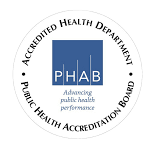Asbestos
Where is Asbestos Commonly Found in the Home? When and How Should It be Removed?
Most products made today do not contain asbestos. Those few products made which still contain asbestos that could be inhaled are required to be labeled as such. However, until the 1970s, many types of building products and insulation materials used in homes contained asbestos. For more information on the 1970's and 1980's bans, click here.
Asbestos was mined and used commercially in North America beginning in the late 1800s. Its use increased greatly during World War II. Since then, it has been used in many industries. For example, the building and construction industry has used it for strengthening cement and plastics as well as for insulation, fireproofing, and sound absorption. The shipbuilding industry has used asbestos to insulate boilers, steampipes, and hot water pipes. The automotive industry uses asbestos in vehicle brakeshoes and clutch pads. More than 5,000 products contain or have contained asbestos.
In the late 1970s, the U.S. Consumer Product Safety Commission (CPSC) banned the use of asbestos in wallboard patching compounds and gas fireplaces because the asbestos fibers in these products could be released into the environment during use. Additionally, asbestos was voluntarily withdrawn by manufacturers of electric hair dryers. In 1989, the U.S. Environmental Protection Agency (EPA) banned all new uses of asbestos; uses established prior to 1989 are still allowed. The EPA has established regulations that require school systems to inspect for damaged asbestos and to eliminate or reduce the exposure to occupants by removing the asbestos or encasing it. In June 2000, the CPSC concluded that the risk of children’s exposure to asbestos fibers in crayons was extremely low. However, the U.S. manufacturers of these crayons agreed to reformulate their products within a year. In August 2000, the EPA recommended that consumers reduce possible asbestos exposure from vermiculite-containing garden products by limiting the amount of dust produced during use. The EPA suggested that consumers use vermiculite outdoors or in a well-ventilated area; keep vermiculite damp while using it; avoid bringing dust from vermiculite use into the home on clothing; and use premixed potting soil, which is less likely to generate dust.
The regulations described above and other actions, coupled with widespread public concern about the hazards of asbestos, have resulted in a significant annual decline in U.S. use of asbestos: Domestic consumption of asbestos amounted to about 719,000 metric tons in 1973, but it had dropped to about 9,000 metric tons by 2002. Asbestos is currently used most frequently in gaskets and in roofing and friction products.
Common Home Building Products That May Contain Asbestos
Common products that might have contained asbestos in the past, and conditions which may release fibers, include:
- STEAM PIPES, BOILERS, and FURNACE DUCTS insulated with an asbestos blanket or asbestos paper tape. These materials may release asbestos fibers if damaged, repaired, or removed improperly.
- RESILIENT FLOOR TILES (vinyl asbestos, asphalt, and rubber), the backing on VINYL SHEET FLOORING, and ADHESIVES used for installing floor tile. Sanding tiles can release fibers. So may scraping or sanding the backing of sheet flooring during removal.
- CEMENT SHEET, MILLBOARD, and PAPER used as insulation around furnaces and woodburning stoves. Repairing or removing appliances may release asbestos fibers. So may cutting, tearing, sanding, drilling, or sawing insulation.
- DOOR GASKETS in furnaces, wood stoves, and coal stoves. Worn seals can release asbestos fibers during use.
- SOUNDPROOFING OR DECORATIVE MATERIAL sprayed on walls and ceilings. Loose, crumbly, or water-damaged material may release fibers. So will sanding, drilling, or scraping the material.
- PATCHING AND JOINT COMPOUNDS for walls and ceilings, and TEXTURED PAINTS. Sanding, scraping, or drilling these surfaces may release asbestos.
- ASBESTOS CEMENT ROOFING, SHINGLES, and SIDING. These products are not likely to release asbestos fibers unless sawed, dilled, or cut.
- ARTIFICIAL ASHES AND EMBERS sold for use in gas-fired fireplaces. Also, other older household products such as FIREPROOF GLOVES, STOVE-TOP PADS, IRONING BOARD COVERS, and certain HAIRDRYERS.
- AUTOMOBILE BRAKE PADS AND LININGS, CLUTCH FACINGS, and GASKETS.
Where to Look for Asbestos Hazards in the Home
- Some roofing and siding shingles are made of asbestos cement.
- Houses built between 1930 and 1950 may have asbestos as insulation.
- Asbestos may be present in textured paint and in patching compounds used on wall and ceiling joints. Their use was banned in 1977.
- Artificial ashes and embers sold for use in gas-fired fireplaces may contain asbestos.
- Older products such as stove-top pads may have some asbestos compounds.
- Walls and floors around woodburning stoves may be protected with asbestos paper, millboard, or cement sheets.
- Asbestos is found in some vinyl floor tiles and the backing on vinyl sheet flooring and adhesives.
- Hot water and steam pipes in older houses may be coated with an asbestos material or covered with an asbestos blanket or tape.
- Oil and coal furnaces and door gaskets may have asbestos insulation.
How to Know if it is Asbestos
Despite what some fraudsters may tell you, it is not possible to identify asbestos just by looking at it. It can only be positively identified by a person trained in fiber identification with a special polarized light microscope. There are certified labs throughout the country that can identify asbestos in building materials (see attached list). Contact a lab to find out how the sample should be collected and sent for testing. It is usually not an expensive test and typically should cost about $35 per sample.
Do NOT try to take samples yourself unless specifically instructed how to do so - you don't want to risk exposure to the airborne fibers by disturbing it without taking the proper precautions.
Why You Shouldn't Disturb Asbestos Unnecessarily
Asbestos fibers can have serious effects on your health if inhaled. There is no known safe exposure to asbestos. The greater the exposure, the greater the risk of developing an asbestos-related disease.
The amount of time between exposure to asbestos and the first signs of disease can be as much as 30 years. It is known that smokers exposed to asbestos have a much greater chance of developing lung cancer than just from smoking alone.
Asbestos can cause asbestosis, a scarring of the lungs that leads to breathing problems and heart failure. Workers who manufacture or use asbestos products and have high exposures to asbestos are often affected with asbestosis.
Inhalation of asbestos can also cause lung cancer and mesothelioma, a rare cancer of the lining of the chest and abdomen lining. It may be linked to cancer of the stomach, intestines, and rectum, as well.
Asbestos Contractor/Consultant and Training:
The Arkansas Department of Environment and Energy (ADEE) manages asbestos licensing and training.
To find a certified asbestos contractor/consultant, please use the ADEE data search- Asbestos Contractors/Consultants Search | Air | DEQ.
For more information, please visit the ADEE Asbestos website- Program Support | Air | DEQ.


